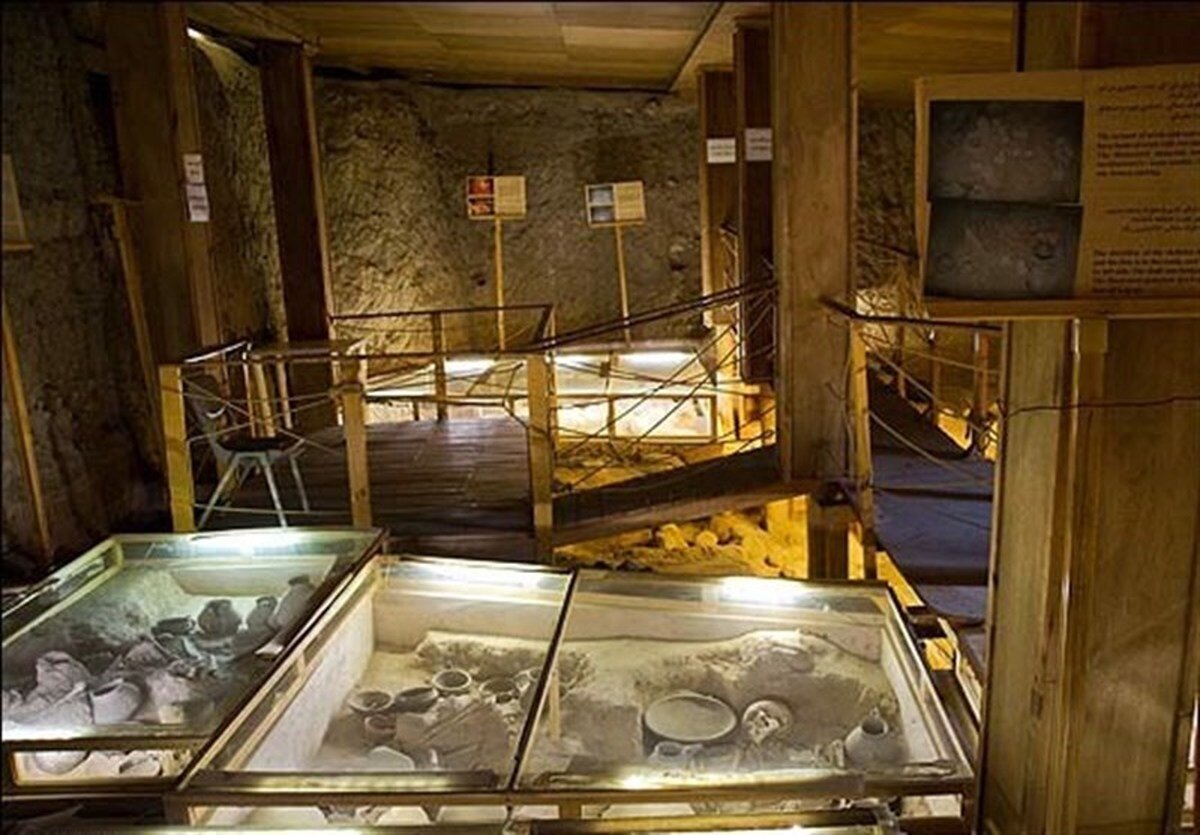Unearthing the past: explore exotic graves of Iron Age at Tabriz museum

TEHRAN – A visit to the Iron Age Museum could be a once-in-a-lifetime experience.
Located in Tabriz, northwest Iran, the fascinating yet scarring site-museum features 38 graves of Iron Age people who lived about four thousand years ago.
Here, socio-economic class is somehow evident when you look into graves dedicated to the rich and the poor; the rich were buried with their possessions, women with their jewelry, and children with their toys.
This delightful cemetery was discovered accidentally in 1997 during a project to construct a mall and after digging the region, the remaining bodies buried in the cemetery were unearthed. Therefore, the project was stopped and an archaeological excavation was started instead, the result of which this historical cemetery was exposed.
The remaining objects were restored and the site-museum became prepared for public visit. A characteristic feature is that the skeletons have not been transferred anywhere and they are exhibited in the original place of burial inside the original context.
Victors have to go downstairs to reach all the graves placed on different levels indicating the hill-form of the cemetery. The bodies were buried in the form of a fetal showing their belief in the deities Meh or Mitra. Evidence suggests those people believed in the afterlife; they were buried like a fetal around which a short wall was drawn like the uterus.
Moreover, there are objects in most of these graves like tools, food, toys, or possessions that can be used in the afterlife. The richer the dead person was, the more objects in his grave were put.
According to Visit Iran, some corpses are more damaged and archaeologists explain this matter in such a way that this cemetery had been their second grave, they had probably been dead in time of migration and their bodies were returned to their hometown after a temporary burial elsewhere.
The humidity is high here because of its location, lower than the ground level, so the bodies are preserved in glass cases, the humidity is reduced using ventilation, and soil has been combined with chemicals in order to better conservation.
You can visit the site in all seasons; however, the weather in Tabriz is cold during winter. Your visit will last 30-45 minutes.
According to the available data, the first well-documented evidence of human habitation on the Iranian Plateau was found in several excavated caves and rock shelters, located mainly in the Zagros Mountains of western Iran, dating to the Middle Palaeolithic or Mousterian period (c. 100,000 BC).
From the Caspian in the northwest to Baluchestan in the southeast, the Iranian plateau extends for close to 2,000 km. The land encompasses the greater part of Iran, Afghanistan, and Pakistan west of the Indus River, containing some 3,700,000 square kilometers. Despite being called a “plateau”, it is far from flat but contains several mountain ranges, the highest peak being Damavand in the Alborz mountain range at 5610 m, and the Dasht-e Loot east of Kerman in Central Iran, falling below 300 m.
AFM
Leave a Comment